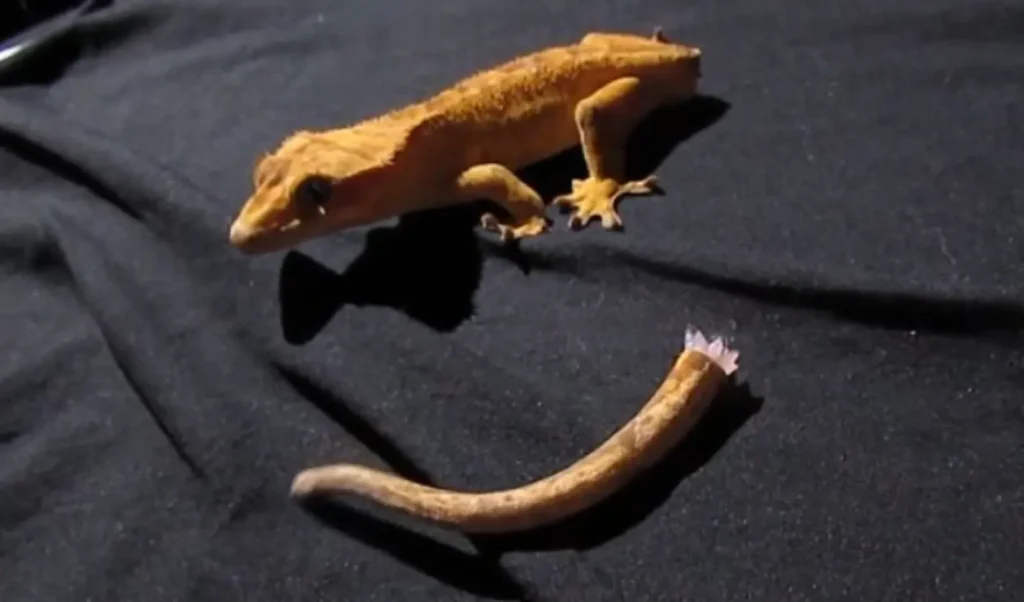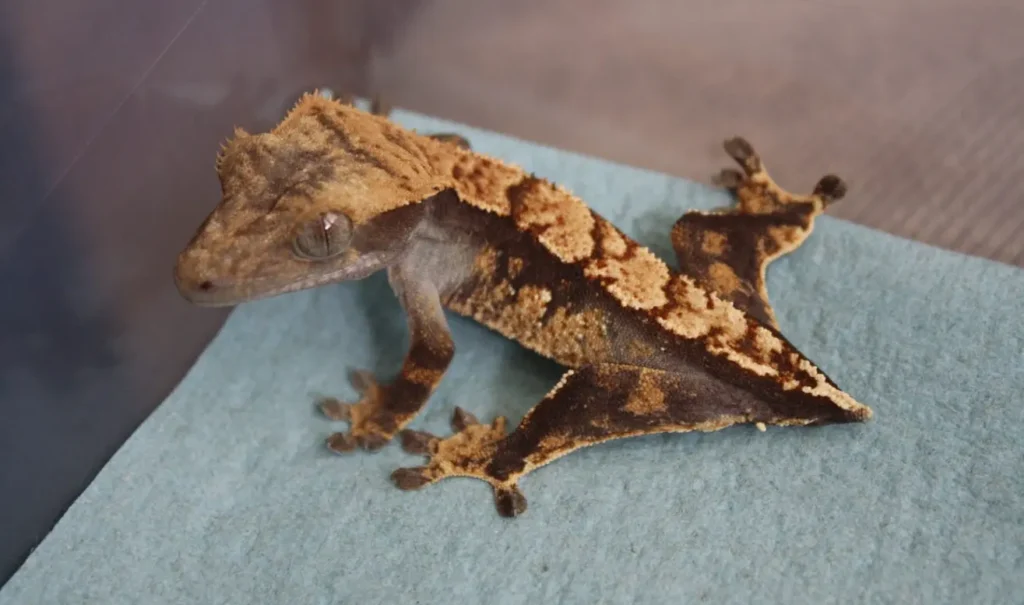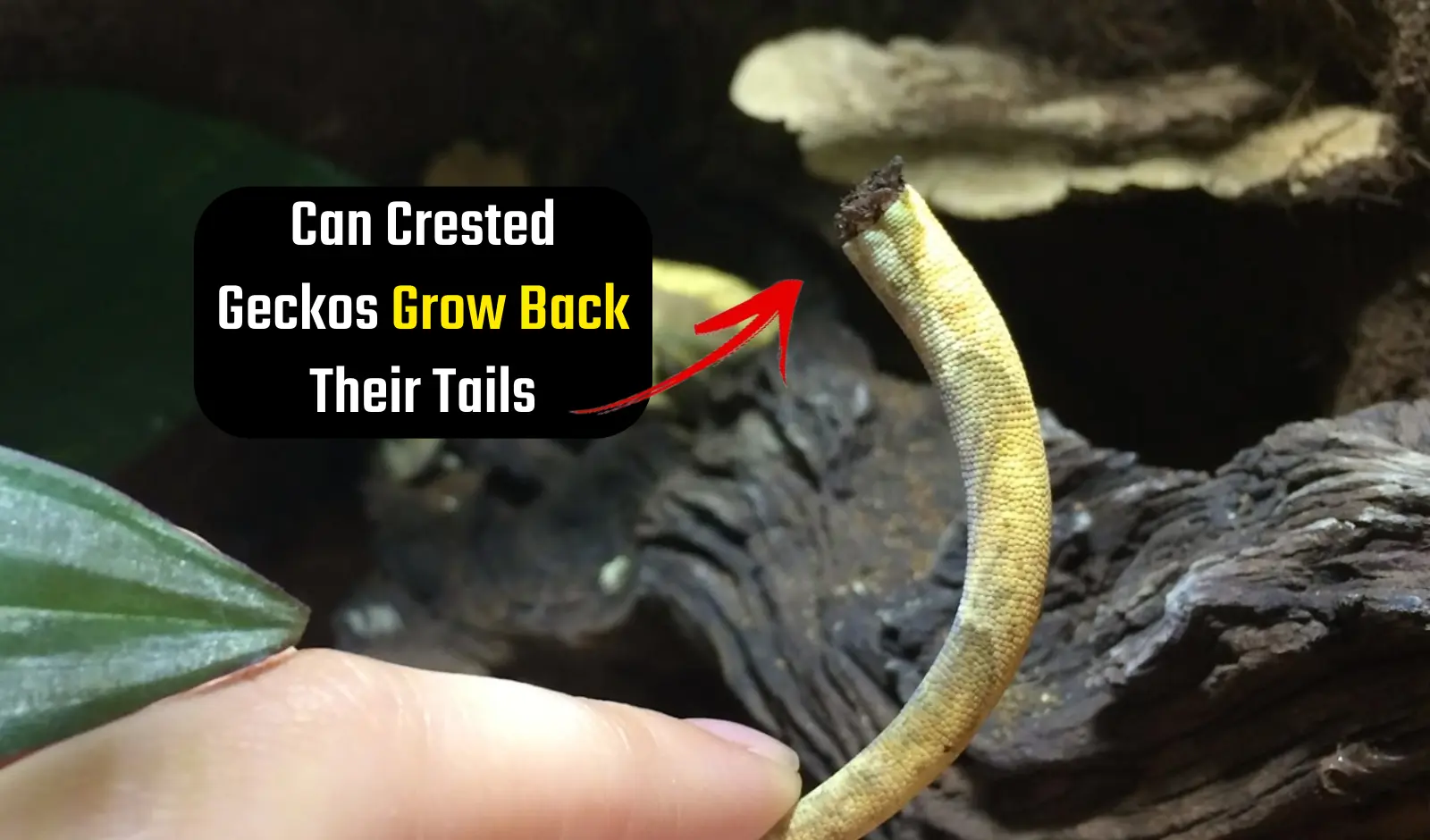One of the most distinctive features of crested geckos is their long and slender tails, which they use for balance, grip, and communication.
But what happens if a crested gecko loses its tail?
Can it grow back?
And how can you prevent or treat tail loss in your crested gecko?
Do Crested Geckos have the ability to regrow their tails?
The short answer is no.
Crested geckos cannot grow back their tails once they lose them.
Unlike most other geckos, such as leopard geckos or gargoyle geckos, crested geckos don’t have the ability to regenerate their tails.
This means that once a crested gecko drops its tail, it will never grow back. A crested gecko that has lost its tail is sometimes called a “Frogbutt” because of its rounded rear end.
However, despite the absence of regrowth, crested geckos adapt well to life without their tails.
They can still climb, balance, and hunt effectively.
Thanks, But Why Can’t They Regrow Their Tails?

Crested geckos can’t regrow their tails mainly because they don’t have the special stem cells needed to do it.
Some kinds of lizards can regrow their tails because they have unique stem cells in a part of their body called the “regenerative zone” or “blastema”.
These stem cells can differentiate into different types of tissues, such as bone, muscle, and skin, and form a new tail. Crested geckos lack this ability, and their tail remains detached once it is dropped.
Scientists are not sure why crested geckos evolved this way, but some possible reasons are:
- Crested geckos have a prehensile tail that helps them grip and balance on branches. This tail may be more complex and difficult to regenerate than a simple tail.
- Crested geckos live in a humid and tropical environment, where infections and parasites are common. A wound from a lost tail may heal faster and better without regrowth.
- Crested geckos may not need their tail as much as other lizards, since they have sticky pads on their feet that allow them to climb and escape predators.
How to Care for a Crested Gecko After Tail Loss?

If your crested gecko loses its tail, do not panic or blame yourself. It is not a life-threatening situation, and your crested gecko will recover from it.
However, you should take some steps to care for your crested gecko after tail loss.
Here’s how to care for a crested gecko after tail loss:
- No Special Care Needed: Tail loss is not a medical emergency, and there is no special care needed. The tail will not grow back, but crested geckos can live a long life without a tail.
- Preventing Infection: After tail loss, use paper towels instead of bedding to prevent loose substrate from causing infections. Watch the tail stump for signs of infection, and consult a vet if there’s any swelling, redness, or discharge at the site of the tail loss.
- Increased Feeding: Ensure your gecko is eating well after tail loss. You can increase the amount of food you normally feed your gecko since the stress can deplete its energy.
F.A.Q.s
Q: Does tail loss affect the health or lifespan of a crested gecko?
Tail loss does not affect the health or lifespan of a crested gecko significantly.
Crested geckos can live a long and healthy life without their tails, as long as they are well cared for and have no other health issues.
Q: What is autotomy, and how does it help Crested Geckos in tail regeneration?
Autotomy is the natural ability of Crested Geckos to voluntarily shed their tails as a defense mechanism.
The lost tail can then regrow over time through a process called regeneration.

